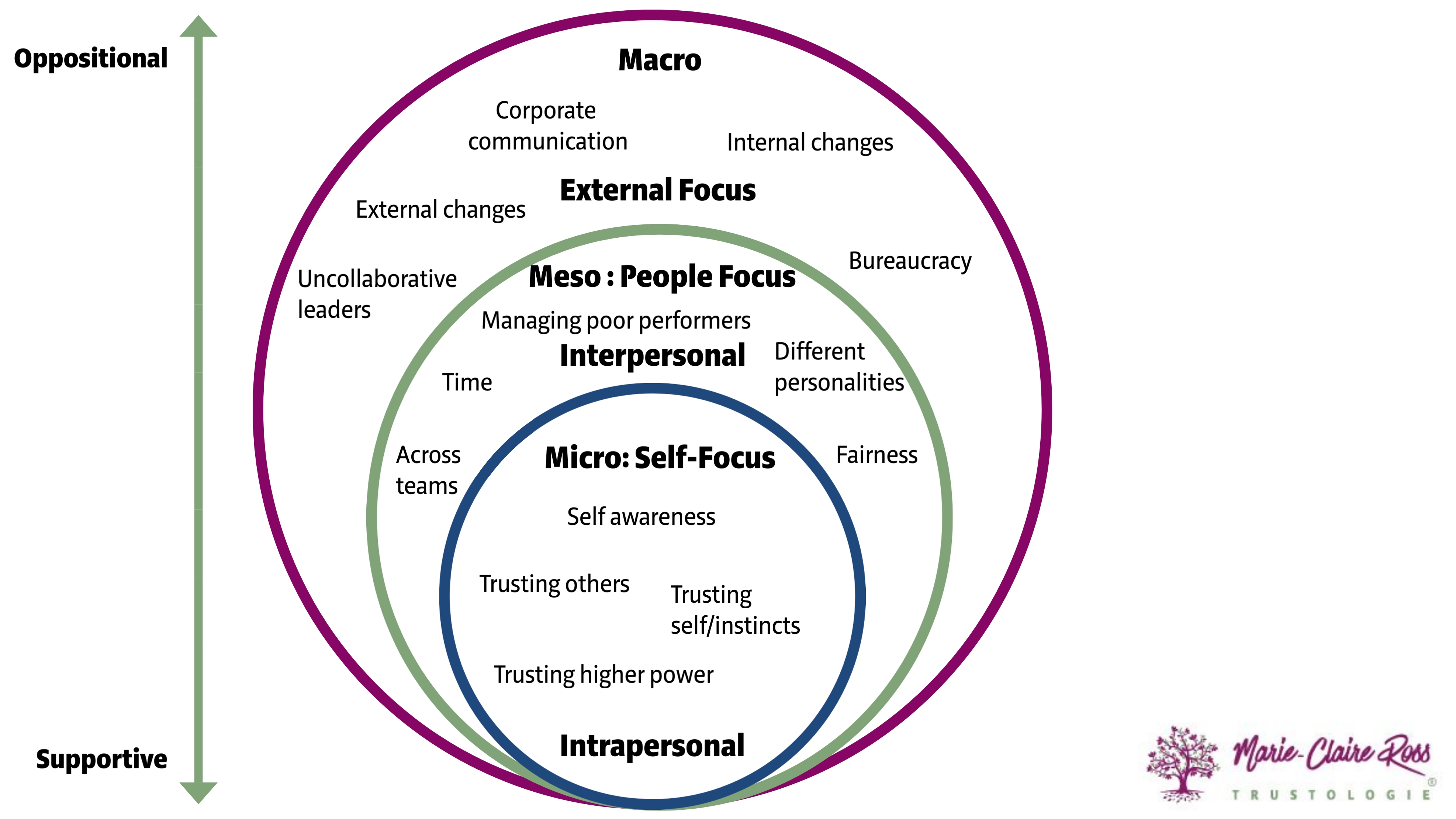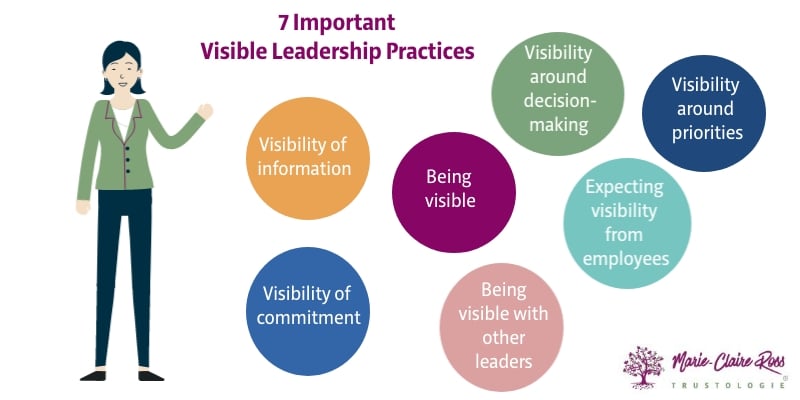In my Integrated Trust Building System, that gets unpacked in the book, Trusted to Thrive, at the intersection between connection and meaningful future, we have ...
Boost Your Leadership Abilities with These 3 Winning Focus Strategies
We are currently in the midst of a silent transformation in the way work is being carried out. The convergence of inflation, the pandemic, and a heightened emphasis on wellbeing has left workers feeling anxious about their job security and unsure about their ability to maintain a decent quality of life.

For many leaders, managing trust in teams is a challenge because they don't understand the interplay between these three different forces. To save time and reduce frustration, you need to know what you can control and what you can’t.
We send these forces out to people and they send them to us, so they are multidirectional you could say and impact us in six different ways. If we don't get manage them right, people tend to distrust our intentions.1. Self-Focus - Micro Trust Forces
Micro trust forces are critical to our ability to lead. These are our intrapersonal skills – our ability to self-manage, understand our strengths and weaknesses, adapt to changing circumstances and learn new things.
Micro trust is underpinned by self-awareness and understanding that the only person we can change is ourselves. We can change how we react, interact and behave, as well as what we believe. At its core, it’s about how much we trust ourselves, how we trust others, a belief that things will turn out okay and trusting our gut.
Improving our self-awareness also improves our ability to empathise with others. Humble and empathetic leaders embrace criticism regarding their personal biases, allowing for greater self-awareness and understanding of their limitations. This self-insight fosters increased levels of humility, empathy, and perspective-taking, enabling leaders to connect with others on a deeper level.
Effective leaders diligently work on developing their self-awareness, staying attuned to their followers' concerns, triggers, and idiosyncrasies, creating an environment of comfort and safety.
According to research by UNSW Business School and Deloitte, their analysis of the 360-degree Inclusive Leadership Assessments (ILA) of more than 400 leaders made by almost 4,000 raters reveals a leader’s awareness of personal and organisational biases is the number one factor that raters care most about.
What employees like to see is a leader who “constantly challenges (their) own bias and encourages others to be aware of their pre-conceived leanings” or when a leader seeks insight into their biases by, for example, by asking others to test whether their thought process is biased in any way.
"The best way to change the world is in concentric circles: start with yourself and work your way out from there.”James Clear
2. People-Focus - MESo TRUST FORCES
Next are the trust issues that occur more within and across the team domain that you have some control over, but still need to navigate to get right.
At the meso level, trust is impacted by what team members think about one another and their leader. These can be supportive or oppositional, depending on the personalities in your team.
It's about being good with people at the team level and across teams/with higher ups. This is where leaders are focused on being real with where they are right now and actively engaging with people. This involves being present - asking curious questions, listening and empowering others (in meetings and one-on-ones).
This necessitates a team leader who possesses exceptional interpersonal abilities. In other words, they invest the necessary time to cultivate trust, effectively handle underperforming individuals, navigate perceived fairness within the team, and manage challenging personalities. Additionally, they foster an environment where team members can develop trust in one another.
In other words, they have the ability to build strong relationships, they know how to approach conflict, communicate change or provide negative feedback. Being able to collaborate and influence others is key here.
People-focus is about recognising that you can't get work done without others and knowing how to authentically get others to trust you.
3. EXTERNAL Focus - MACRO TRUST FORCES
Macro trust forces are either external to the organisation or part of the internal fabric of how work is done overall in an organisation’s architecture. These are environmental factors that leaders need to shield their employees from, in order to reduce distress and unnecessary distractions.
These can be the most frustrating and anxiety provoking as they are outside your locus of control. They come in a variety of forms - erratic weather patterns, pandemics, internal changes, bureaucracy and difficult executives.
To reduce unnecessary distractions from events outside of your control requires:
1. Directing Effort to a Positive Future
To lift people's sights towards a brighter future requires being able to talk about a positive future. To empower, motivate, and ignite the passion of individuals on a grand scale, leaders must possess the ability to effectively convey a captivating vision or purpose, guarantee that the organisation's systems and values align with the stated goals, and serve as exemplary role models in their everyday actions.

